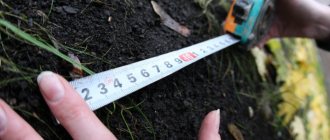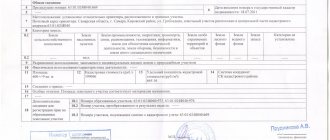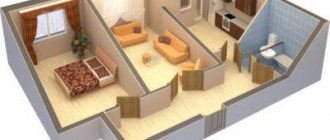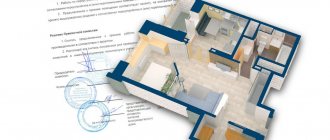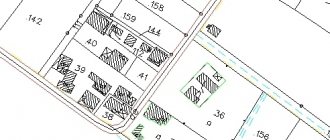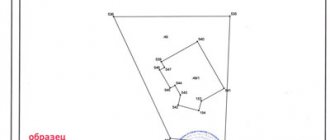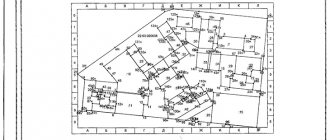Home / Land, dacha, construction / Documents and legislation / Land plot / Ownership / Registration
Back
Published: 12/18/2017
Reading time: 9 min
0
1656
A garden plot is land allocated for planting berries, vegetables and fruit crops, as well as for the construction of outbuildings or a garden house (capital construction is prohibited here). Usually, plots from the agricultural fund in a favorable ecological environment and with good soil fertility are allocated for gardening.
- The procedure for registering land ownership
- Registration procedure
- Registration of property rights through the court
Such land plots are usually located on the territory of gardening partnerships (GNT). These are associations of citizens created on a voluntary basis to solve various agricultural problems that gardeners cannot solve alone (for example, laying a road or power line). Plots in SNT may belong to the municipality, partnership or gardeners. SNTs can purchase plots of common property using membership fees from gardeners.
Gardeners can use land for gardening for various reasons (Articles 15,20-22 of the Land Code):
- property;
- rent;
- the right of lifelong ownership or perpetual use, secured by the state.
The procedure for registering land plots as property is regulated by: the Civil and Land Code, Federal Law No. 218 on state registration of real estate and Federal Law No. 66 on gardening partnerships.
Violetta Kolosova, a lawyer at the legal service “Unified Defense Center” (edin.center), answers:
The land plot located in SNT will remain your property.
After SNT is liquidated, houses, land plots and other real estate located on these plots will even have the same address. But with public lands it will be necessary to resolve the issue separately, since, according to Part 1 of Art. 28 of the Federal Law “On the conduct of gardening and vegetable gardening by citizens for their own needs...”, after the liquidation of SNT, they become the shared property of the owners of the land plots. And you, as a co-owner of public lands, will be obliged to clean roads, remove garbage, etc. To avoid this, before the liquidation takes place, you need to organize the transfer of public lands to municipal ownership in accordance with clause 8 of Art. 25 of the Law on Horticulture. Then the municipality will be required to do all the specified actions to maintain this property. Which payments to SNT are mandatory and which are not?
What should I know when buying a dacha in SNT?
The procedure for registering SNT for cadastral registration - documents where to apply
To register SNT, you will need the following papers:
- Applicant's passport.
- Extracts from the cadastral authority.
- Documentation indicating that a person owns a plot of land in SNT. Such paper can be an extract from the book of the gardening society.
- Application (drawn up by the person who applies for registration).
- A check indicating payment of the state duty in full.
To put SNT on the cadastral register, you will need to survey the territory, after which registration in the cadastre is carried out. Land surveying issues are dealt with by a cadastral engineer who comes to the land plot after completing the necessary procedures. The result of his work is a technical plan indicating the storage limits.
Having the mentioned document in hand allows you to begin registration procedures. When submitting the application, you must have your passport and payment receipt on hand. The entire process of registering SNT for cadastral registration takes about 30 days.
Where to go?
A number of changes have been made to the Land Code of the Russian Federation, according to which the registration of dacha or other land plots is carried out without reference to a specific part of the country. It does not matter to the authorized bodies where exactly the plot is located. For example, the land may be near Perm, but it is allowed to register it even in Moscow.
In 2020, the following options for cadastral registration are highlighted:
- Through Rosreestr. When choosing this path, it is recommended to come to the authorized body in person or send a representative (there must be a notarized power of attorney). A complete package of papers is submitted to the authorized body (submitted against receipt). The registration structure will be allocated at least five days to review the documentation.
- Through MFC. In the process of receiving documentation from the client, the MFC employee also issues a receipt. Otherwise, the process is no different from what is discussed above. The downside is that the registration will take 2-3 days longer due to the need to transfer papers from the MFC to Rosreestr.
Procedure
To speed up the process and register an unregistered SNT plot with cadastral registration the first time, you should adhere to the following algorithm:
- We collect the papers discussed above and go with them to the cadastre authority (Rosreestr). We fill out an application with a request to register SNT.
- We pay the state fee at the cash desk on the territory of the institution. It is important to note that the amount of payments for ordinary citizens (individuals) and companies differs slightly.
- After paying the state fee, we hand over the check and other papers to the employee of the institution and take a receipt. The paper, as a rule, indicates the day the passport is issued for the loan. If there are no errors in the submitted documentation, registration takes up to 20 business days. In other situations, delays may occur.
- We take away the finished document confirming the fact of registration of SNT. Papers submitted for the registration process will not be returned.
See also: What is the civil liability of the developer?
Nikolai Yablokov, head of the department of JSC Property Fund of St. Petersburg, answers:
The question is not entirely correctly formulated, since the administration of a city (settlement or other locality) cannot liquidate real estate owners' associations (RTN), of which SNT is a type. This can only be done by a general meeting of the partnership, as well as its reorganization (in accordance with 217-FZ of July 29, 2017).
Most likely, we are talking about the inclusion of the SNT territory within the boundaries of the settlement, respectively, about changing the category of land from agricultural lands to settlement lands and the subsequent reorganization of the SNT into a HOA (as one of the possible options). At the same time, changing the type of a gardening non-profit partnership to a homeowners' partnership does not constitute its reorganization. There should be no deterioration in the living and farming conditions for the owners.
Another possible option: if, according to the PZZ of the locality in which SNT is located, the territory is classified as a development zone for individual residential buildings, then at a general meeting of SNT members a decision may be made on its liquidation and the transfer of lands that are in common shared ownership of the members SNT (roads, driveways and other things), the property of the settlement. Then every former gardener will become the owner of an individual housing construction site. The advantages of this option: the responsibility for cleaning, sanitary maintenance, street lighting, etc. falls on the administration. Disadvantages: each owner will have to independently enter into contracts for electricity, water supply, garbage removal, etc.
Am I required to join SNT?
Is it possible to keep poultry and pigs on 4 acres?
How to register SNT for cadastral registration?
Now let's look at the issue regarding the registration of land plots. Before registering an unregistered plot of land for cadastral registration, it is worth preparing the following information:
- Schematic representation of the land plot taking into account the land surveying. The owners and plots that will be used jointly in the future are also indicated here.
- Information, confirmation of the possibility of using land plots. Here we are talking about papers for the use and provision of such sites.
- Information from the constituent documents of SNT.
The collected documentation is transferred to local authorities, and after surveying, a land management plan is drawn up. It indicates areas that are privately owned and classified as lands of joint use.
The rules for SNT indicate that individual privatization is allowed. At the same time, the transfer to personal or shared use of some objects is prohibited. For example, if SNT participants spent money on restoring a road, registration of shared ownership of the object is impossible. This is because it is already mentioned in the documentation.
See also: Current issues in the construction industry
ABA-Consulting lawyer Olga Zerkal (Warsaw) answers:
If your plot is your property and the ownership of this plot is registered in accordance with the procedure established by law, then significant changes in your life will not happen: you will use it as you used it.
If, since the time you were allocated six “Soviet” acres of land (even before the Land Code of the Russian Federation came into force), you have not bothered to register your ownership of this plot, then after the liquidation of SNT your plot will become municipal property and there is a real risk of losing it .
Although the elimination of SNT is a very rare, if not unique, phenomenon. During my 15 years of legal practice, I have not seen a single procedure for liquidating SNT. The whole point is that making a decision on the liquidation of SNT falls under the prerogative of the general meeting of SNT members. And the members of the partnership will never vote for its liquidation, because they understand (at least they should understand) that this decision will greatly complicate their lives in organizational and everyday terms (the simplest everyday issues become problematic, such as: the use of access roads, the provision of country houses electricity, water supply and sanitation, garbage removal, etc.).
However, if there is a real threat of liquidation of the SNT, within the boundaries of which your land plot is located, then hurry to register it in the cadastral register and register ownership.
Do I have to pay fees if I have not entered into an agreement with SNT?
Do I need to pay contributions to SNT if I own the land?
The need to register SNT in possession
The delineation of plots intended for general use is carried out to separate nearby plots of land. Work is also carried out in situations where a specific citizen owns the land. But in such a situation, a key condition must be met - access to the property used.
As for the need to register SNT in 2020, there is no clear answer. The laws of the Russian Federation do not contain a requirement stipulating the need to register such objects for cadastral registration. As a rule, the relevance of the design is determined individually after studying the characteristics of the site and the current situation.
If a person has papers in his hands that meet the requirements of the law, the lack of a cadastral passport is not a problem. But if you have free time, it is recommended to go through the necessary set of measures and obtain documentation that is relevant in 2020. If SNT is registered with the cadastral register, many difficulties can be avoided in the future, including with neighbors on the plot.
In most cases, the decision to re-register documentation is made at a general meeting of SNT participants. It is worth noting that in 2018, registration of collective joint property is not available. If a collective decision is made to register common lands in the possession of a legal entity, gardeners lose their existing shares and transfer them to the disposal of the new owner.
See also: Procedure for connecting to the water supply and sewerage system - instructions, documents
It is worth highlighting separately what collective joint property is. The current Federal Law No. 66 (Article 28) indicates one feature. All plots of land classified as general use must be transferred to the ownership of SNT without making a payment.
What to consider?
The process of registration of SNT begins with cadastral registration with government authorities. As soon as KV1 (special form) is in hand, work on land surveying is allowed. When implementing such activities, it is important to determine the attitude of other participants to the process.
The key point is the absence of controversial situations regarding the boundaries of SNT lands. In this case, a mandatory stage is a cadastral survey, after which an approval act is made. The document indicates the boundaries of the site and contains the signatures of the neighbors. The presence of a discrepancy between the actual boundaries of the site and the data from the general plan can lead to a number of problems in the future. In this case, the return of the memory is possible in two ways. The first is negotiations with people who illegally seized a piece of land. The second is radical and involves protecting interests through the courts.
Law
ATTENTION! Membership fees in a non-profit gardening partnership are paid only by those persons who have officially formalized their entry into such a community.
There are no strict requirements for joining the SNT. At this time, it is possible to purchase a plot of land from a gardener, register its ownership, and engage in vegetable gardening or gardening without joining the ranks of SNT members.
Even if the previous owner of the site made regular contributions, the new one may refuse membership. The legitimate answer to the question “How not to pay money for the general needs of SNT” is not to formalize membership in the partnership.
A gardener who owns a plot in a partnership village can take part in common affairs, even give money for common needs, but he does this on a voluntary basis; no one can force him to make transfers to a common account.
Changes in payment
Since 2020, new rules have been introduced for the payment of fees by members of horticultural non-profit partnerships. According to the requirements of Federal Law No. 166, adopted in 2020, payment of membership fees is made through a bank to a current account.
But changes in legislation have not limited the rights of the general meeting of members of the partnership; it is this meeting that decides issues regarding the amount of contributions and their expenses. Federal Law-166 specifies what membership fees to SNT can be used for:
- The entrance fee goes towards processing documents for membership in the partnership.
- Regular funds are spent on the maintenance of public facilities, on current current and urgent expenses, and on payment for work.
- Targeted funds are money for the construction or purchase of certain equipment and facilities.
- Additional ones are needed to cover unexpected losses.
The provisions of the new law also apply to the rules for the use of common property. If a person who is not a member of the SNT wants to use such property, he must transfer a certain fee.
ATTENTION! Such fee shall not exceed the amount of the dues.
The management and board of SNT controls contributions and is responsible for their expenditure. If necessary, it can sue the debtor.
